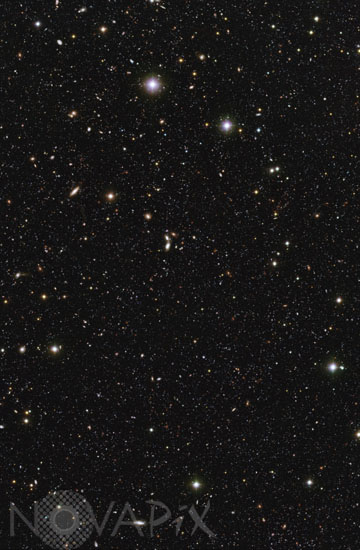Photo Agency - Astronomy - Space - Nature

Distant galaxies - GOODS Chandra Deep Field South
author: ESO/Novapix
reference: a-gax97-00033
Image Size 300 DPI: 35 * 55 cm
Obtained in part with the Very Large Telescope, the image contains more than 27 million pixels and is the result of 55 hours of observations with the VIMOS instrument. This patchwork image, with its myriad of brightly coloured galaxies, shows the Chandra Deep Field South (CDF-S), arguably the most observed and best studied region in the entire sky. The CDF-S is one of the two regions selected as part of the Great Observatories Origins Deep Survey (GOODS), an effort of the worldwide astronomical community that unites the deepest observations from ground- and space-based facilities at all wavelengths from X-ray to radio. Its primary purpose is to provide astronomers with the most sensitive census of the distant Universe to assist in their study of the formation and evolution of galaxies. The new image released in november 2008 combines data obtained with the VIMOS instrument in the U- and R-bands, as well as data obtained in the B-band with the Wide-Field Imager (WFI) attached to the 2.2 m MPG/ESO telescope at La Silla, in the framework of the GABODS survey. Galaxies were detected that are a billion times fainter than the unaided eye can see and over a range of colours not directly observable by the eye. This deep image has been essential to the discovery of a large number of new galaxies that are so far away that they are seen as they were when the Universe was only 2 billion years old. In this sea of galaxies – or island universes as they are sometimes called – only a very few stars belonging to the Milky Way are seen. One of them is so close that it moves very fast on the sky. This "high proper motion star" is visible to the left of the second brightest star in the image. It appears as a funny elongated rainbow because the star moved while the data were being taken in the different filters over several years.
Contact : Stéphane Aubin +33-(0)9-51-26-53-76
© Novapix - All rights reserved


